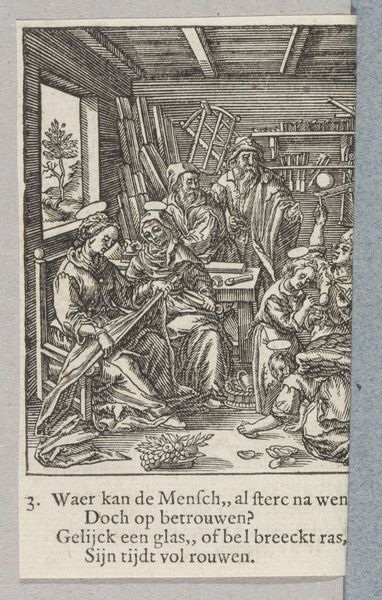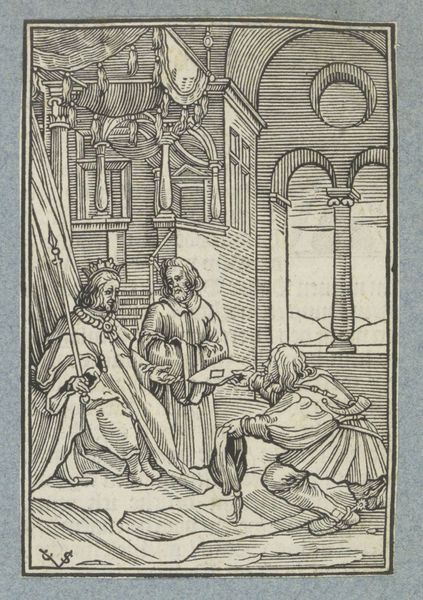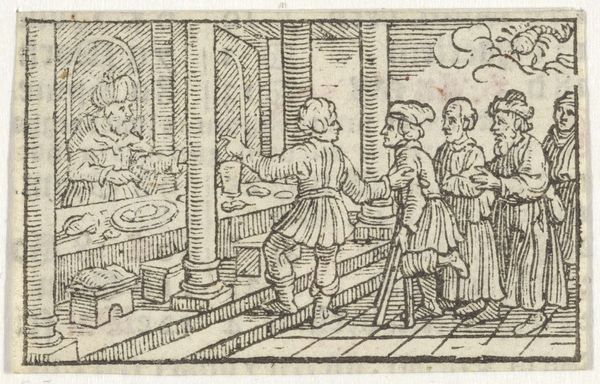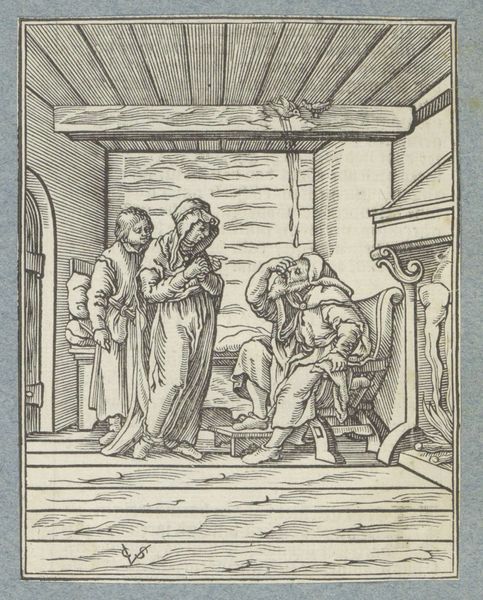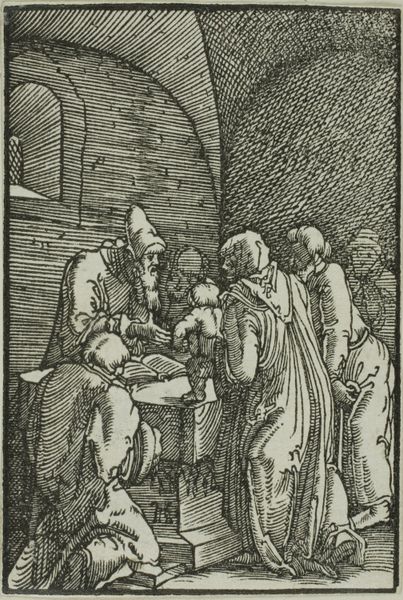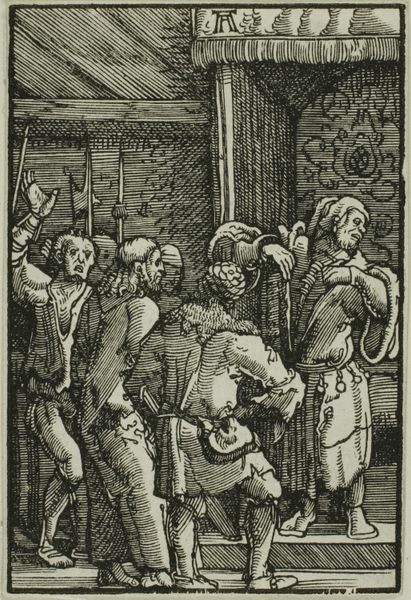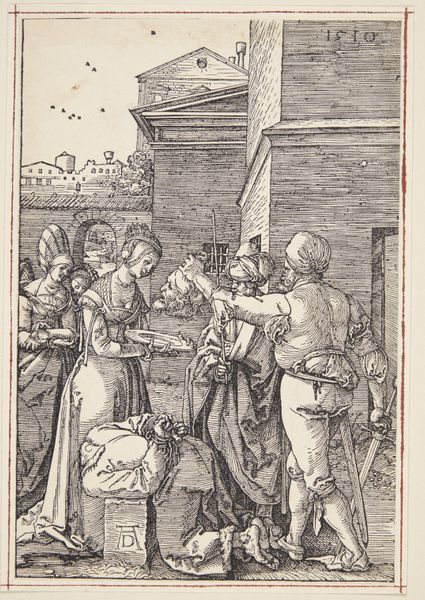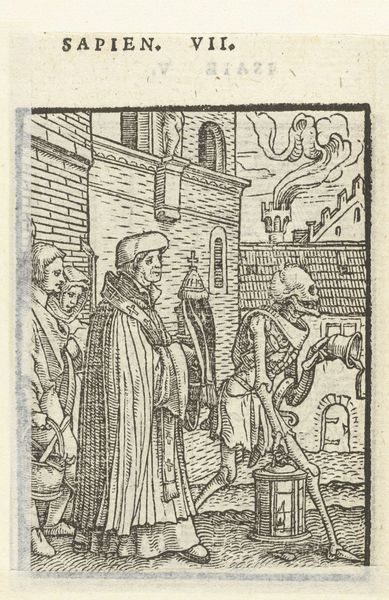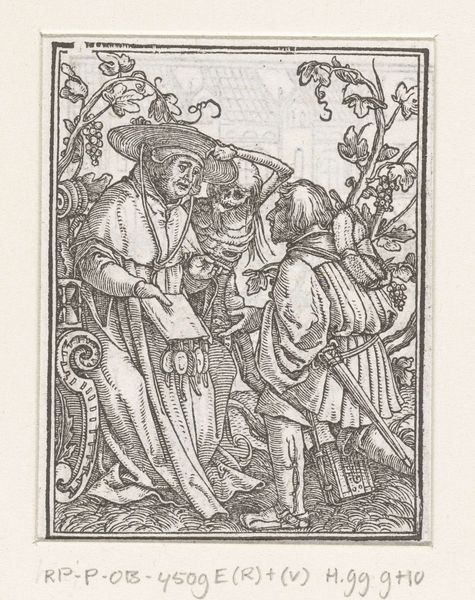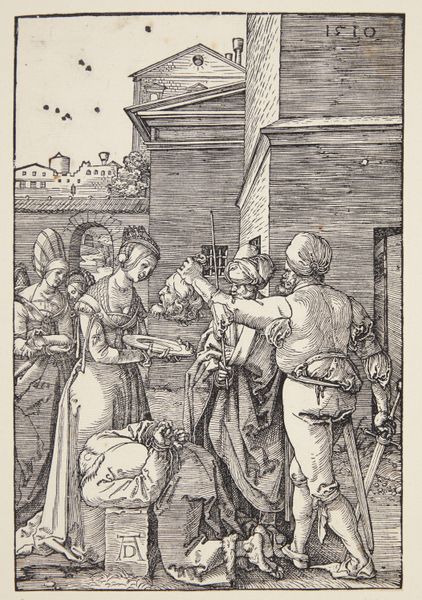
print, woodcut, engraving
#
allegory
#
narrative-art
# print
#
old engraving style
#
figuration
#
woodcut
#
line
#
history-painting
#
northern-renaissance
#
engraving
Dimensions: height 65 mm, width 50 mm
Copyright: Rijks Museum: Open Domain
Hans Holbein the Younger created this woodcut, "Rechter en de Dood," using stark lines to capture a dramatic encounter. The eye is immediately drawn to the contrast between the robust figures of the judge and the merchant, and the skeletal figure of death looming behind the judge, creating a visually jarring experience. Holbein masterfully uses line and form to dissect themes of mortality and justice. Death's skeletal form starkly contrasts with the judge's fleshy presence, unsettling traditional notions of power and authority. The hourglass at the judge's feet is not just a symbolic object but a structural element, its circular form echoing the cyclical nature of life and death, and disrupting the linear progression of the scene. Ultimately, the woodcut serves as a memento mori. The sharp lines and stark contrasts confront us with our own mortality, urging a reflection on the structures of power and morality. The image is a poignant reminder that death, in its stark simplicity, levels all hierarchies.
Comments
No comments
Be the first to comment and join the conversation on the ultimate creative platform.
